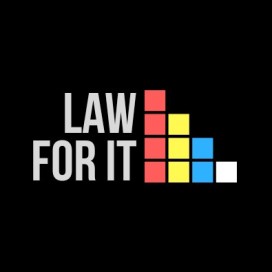[This article was first published on the Mapping ADR Blog as authored by Aryan Babele, you can read this article at http://mappingadr.in/a-step-ahead-analysing-indian-arbitration-law-in-the-context-of-international-technology-disputes/]
Technology-based enterprises are becoming the leaders of the global market in its every aspect. No industry has experienced such explosive growth as has been experienced by the industry of technology-based enterprises; especially in the context of globalization of the economy and the complementary expansion in international trade in recent years. The technology industry is indeed an international sphere due to its components, viz international supplying and distributing networks that have enabled manufacturers to provide their technology products/services to consumers at a global scale. For instance, Biotechnology is high in demand at global scale due to its influence in multiple spheres- medical, environmental, industrial etc., which are facilitated by processes like manufacturing, licensing and distributing. The global economy has given a significant boost to the demands on flexible dispute resolution, including international arbitration, as a means for resolving technology business disputes. This characteristic of technology business has become one of the main driving forces to the fact that the technology industry is progressively adopting arbitration as a dispute resolution method for international transactions where the base of its customers, suppliers and resources is established across multiple jurisdictions. As the competition to become a leader for the proper seat of technology-arbitration is becoming stiffer among nations, it is interesting to note that why arbitration is better than litigation for technology disputes. Further, considering India’s huge Information Technology industry, it is important to analyse the preparedness of the arbitration law of India to handle the international technology arbitrations.
In the technology industry, the contracts between two parties are most often based on the objective to provide services such as to acquire, sell or finance a high-tech business or project; manufacture, distribute and/or deliver; license patents or other intellectual property rights (IPRs); and purchase insurance policies covering risks associated with the production or operation of high-tech assets.[1] Therefore, difficulty with litigation in technology disputes, that arises out of a contract is that it involves multi-faceted issues related to different rights- acquisition, patent, know-how, trade secrets, etc. Fulfilment of liabilities established by such rights needs certain assurances from the national law regarding neutrality, speedy and flexible procedures, fulfilment of intentions and needs of the parties, confidentiality protection, experts’ decision etc.
DISADVANTAGES OF LITIGATION IN INTERNATIONAL TECHNOLOGY DISPUTES
In litigation, the major disadvantage to the parties in a technology dispute is the decision by an inexpert who is not able to appreciate the technicalities of a scientific testimony with little or no knowledge of relevant legislation and regulations. Players in fast-paced technology markets cannot afford to have progress stalled for lengthy and expensive litigation due to unexpected adjournments and options of appeal to higher courts.[2] Public nature of judicial proceedings makes the preservation of confidentiality a problematic task in litigation, which is extremely significant for technology-based enterprises. In litigation there arises a situation where legal actions for a dispute are submitted across multiple jurisdictions simultaneously, leading to uncertain and risky results. In such a scenario, even the litigators find it very uncomfortable to litigate abroad surrounded by unfamiliar foreign laws, regulations, customs, or language. Therefore, given the risks, it is not reasonable for technology-based enterprises to always opt for litigation in order to get resolve the international business disputes.
ARBITRATION: A SUITABLE DISPUTE RESOLUTION MECHANISM
As litigation is not always the best resolution method for the disputes which involve technology-based enterprises, there is a need to explore an alternative dispute resolution mechanism. In an international dispute, the greatest concern for both the parties is the favourability of the substantive and procedural laws of a particular jurisdiction to one or the other party. International arbitration provides the autonomy to the parties to decide the law and the forum which will govern the procedural and substantive aspects of the dispute resolution. As the pace of settling a dispute is given major consideration in commercial disputes, especially for technology business, the inherent characteristic of arbitration proceedings being a cheaper and a quicker process makes it an attractive approach to resolve disputes. As there is no appeal on the merits in arbitration, it is another reason for it being a swifter process than litigation.[3] Even if such an appeal to the Courts for the enforcement of the final award, that is too a streamlined process with time limits on the decision.[4] Arbitration, in contrast to the litigation, assures the confidentiality privilege pursuant to the agreement as it is a private procedure. Further, the availability of uniform rules for international commercial arbitration better meets the requirement of parties in the context of international technology disputes. For example, the success of the New York Convention, 1958, that has been ratified by 145 nations, boosts the confidence in the parties to afford the international arbitration as a mechanism for dispute resolution. Therefore, it is amply clear that all the usual advantages of arbitration in commercial disputes are applicable to the technology disputes making it a more efficient and effective dispute resolution alternative to litigation.
ANALYSING THE ARBITRATION AND CONCILIATION ACT, 1996 IN THE CONTEXT OF INTERNATIONAL TECHNOLOGY DISPUTES
After a lot of serious bureaucratic deliberations and political-intellectual debates, comprehensive overhauling of the Arbitration Act of 1940 resulted in the enactment of the Arbitration and Conciliation Act, 1996. With recent amendments in 2015, considering judgements of the Apex Court of India in cases of Bhatia International v. Bulk Trading[5]and BALCO v. Kaiser[6], it consolidated the domestic as well as international law of arbitration to make it suitable to the international commercial disputes in a better way than ever before. It further reflects the standards of the UNCITRAL model law on international commercial arbitration to promote the neutral and independent arbitral proceedings in India. Almost every provision of the Act 1996 takes into consideration the intent of the parties in one form or another. It also stresses the significance of arbitration agreement providing the instrument for parties to choose the expert decision makers and their powers as arbitrator in the arbitral proceedings.[7]
Privacy is a major concern for the technology disputes and constant interference of the national courts in arbitral proceedings subject it to broader public scrutiny, due to which not only confidentiality but also flexibility, procedural predictability, and informality of arbitral proceeding gets fragmented. The Act of 1996 provides a very limited number of circumstances in which national courts can intervene in arbitral proceedings, allowing arbitrations to take place according to its natural flow. The Act considers the principle of ‘party autonomy’ as the essence of the arbitration. It provides for an arbitral tribunal with power to rule on its own jurisdiction and determine the rules of proceedings[8], in order to ensure proper and expeditious conduct of the arbitration between parties, preserving the party autonomy. It further excludes the intervention from national courts by allowing the continuation of arbitral proceedings and making of final awards, thereby eliminating prospects for the delay.[9] To keep parties responsible towards the arbitral proceedings, the tribunal has powers to further delineate procedural duties on each party that comes with certain obligations such as security for costs and dismissal of the claim, in order to avoid any inordinate delay.[10]
In technology disputes, one of the most sought-after reliefs is interim reliefs as most of the international technology disputes arise from the contracts/license agreements. In such disputes, at the time of any deadlock, it is the aim of the licensor to pause the exploitation of technology and trade secrets. The Act has given the power to the tribunal to order such relief on a provisional basis but that is highly subjected to the scrutiny of national courts.[11] Also, it provides power to the tribunal to make an interim arbitral award at any time of the proceedings.[12] For technology arbitrations, there is a requirement of more specific and clearer provisions. The Act is supposed to confer such power on the arbitral tribunal with more substantiated provisions elaborating on the situations and conditions in which the tribunal can grant such injunctive reliefs.
Further, the Act is also required to make broader provisions regarding the protection of privacy and confidentiality of the details of parties and subject of the arbitral proceedings. It is certainly a big requirement for technology disputes that there be a provision related to blanket cover for issues of protecting the confidentiality. Therefore, particularly in relation to international technology disputes, the Act 1996 is needed to provide greater assurance and discretion to parties in terms of choice of arbitration institution, choice of an expert for arbitration (especially expertise in Telecommunication, Media and Technology laws), and IP infringement disputes.[13]
CONCLUSION
Technology-based enterprises drive the major transformations of the world by providing solutions to some of the greatest conventional anomalies. As there will be more and more research and development of technologies, they would result in more commercial contracts. Trodding the same path, there would soon be a separate pile-up of technology disputes in national courts. Hence, it is the need of the hour for parties to consider other dispute resolution mechanisms that are more expeditious and flexible.
Technology companies are themselves starting to anticipate this and increasingly choosing arbitration to resolve the international disputes, as stated by SVAMC as well.[14] Western nations and developed nations from Pacific Rim t have also understood the significance of resolving the technology disputes in a more speedy manner and have already taken specific actions for rectifying the concerns.
For India, there is a stiff competition ahead to stand as a centre for the arbitration in international technology disputes. There is no doubt that the Arbitration and Conciliation Act, 1996 provides an attractive framework for the resolution of international commercial disputes; but for technology disputes, there is a need to take a step ahead and to incorporate in the Act broader provisions relevant to interim reliefs, more flexible confidentiality clauses, e-case management, efficient e-disclosure review etc. Given India’s established law of arbitration in place and booming IT industry, there is a great opportunity for India to play a leader’s role in resolving international technology disputes.
[1] Raymond G. Bender, Arbitration- An Ideal Way to Resolve High-Tech Industry Disputes, Dispute Resolution Journal Vol. 65 (4), https://svamc.org/wp-content/uploads/2015/08/Arbitration-An-Ideal-Way-to-Resolve-High-Tech-Industry-Disputes.pdf.
[2] Sandra J. Franklin, “Arbitrating Technology Cases—Why Arbitration May Be More Effective than Litigation When Dealing with Technology Issues,” Mich. Bar J. 31, 32 (July 2001).
[3]Supra note 1.
[4]§34, The Indian Arbitration and Conciliation Act, 1996, Act no. 26 of 1996, Acts of Parliament. (India). https://indiankanoon.org/doc/536284/
[5] (2002) 4 SCC 105. https://indiankanoon.org/doc/110552/
[6] (2012) 9 SCC 552.https://indiankanoon.org/doc/173015163/
[7]§§ 7, 11, Supra note 5.
[8] §§ 16, 19, id.
[9] § 16(5), id.
[10] §§ 9(ii)(b), 4(b), id.
[11] §17, id.
[12] § 31(6), id.
[13] Norton Rose Fulbright, Arbitration in technology disputes, International Law Office, (Nov. 9, 2017), https://www.internationallawoffice.com/Newsletters/Arbitration-ADR/International/Norton-Rose-Fulbright-US-LLP/Arbitration-in-technology-disputes
[14] Gary L. Benton, Technology Dispute Resolution Survey Highlights US and International Arbitration Perceptions, Misperceptions and Opportunities, Kluwer-Arbitration Blog, http://arbitrationblog.kluwerarbitration.com/2017/10/28/technology-dispute-resolution-survey-highlights-us-international-arbitration-perceptions-misperceptions-opportunities/










